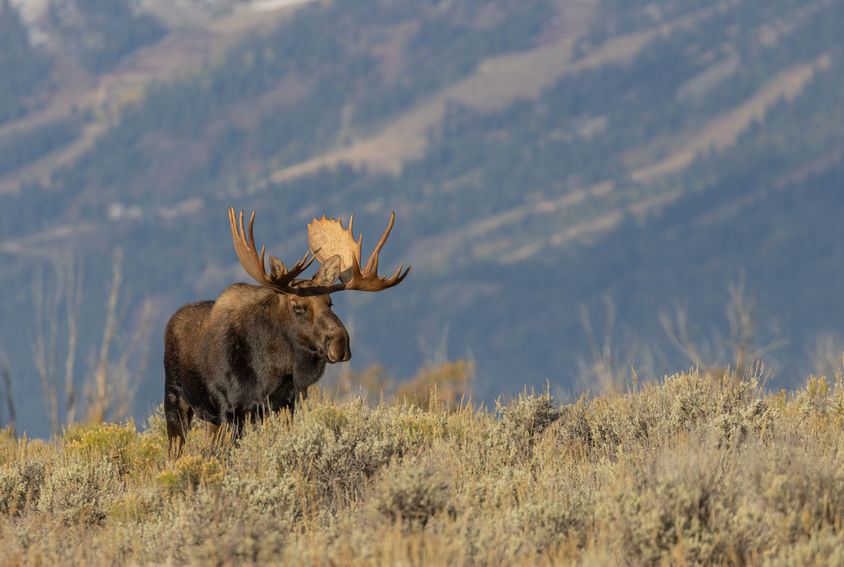
A hunter’s best tool in the field isn’t just their weapon; it’s their knowledge of the animal they’re pursuing. When it comes to moose hunting, understanding behavior during the rutting (mating) season can make all the difference between a missed opportunity and a successful harvest.
Every fall, moose enter rut season, typically from late August through mid-October. During this time, bulls are highly active and easier to locate, which gives hunters a distinct advantage. Here are a few key facts about moose rutting that can help you make the most of your hunt!
1) Bulls Move to Find Cows
Throughout much of the year, bull moose prefer dense forest cover in higher elevations, while cows tend to stay in lowlands near lakes, rivers, and marshes, but once rutting season begins, bulls start traveling to lower ground to find cows.
Tip: During early rutting weeks, focus your search around lowland bodies of water as these areas often attract both bulls and cows.
2) Bulls Mark Their Territory with Scent
Scent marking helps bulls claim territory and attract mates. They create wallows, shallow pits in the ground where they urinate and then roll around to cover themselves with scent. They also thrash vegetation with their antlers to signal dominance.
Tip: Look for freshly disturbed shrubs, ground markings, or rut pits. These signs indicate recent bull activity and can help pinpoint prime hunting zones.
3) Sparring Displays Strength and Dominance
During the rut, bulls often spar to establish dominance. These contests are more about testing strength than causing harm. Mimicking the sound of sparring (by rubbing small antlers together) can attract curious bulls looking to assert themselves.
Tip: When using this tactic, stay patient and keep your movements to a minimum. Bulls often approach cautiously before showing themselves.
4) Cows Call When They’re in Heat
Cow moose use loud, nasal calls to attract bulls during mating season. Hunters can imitate these sounds using a moose horn or even their own voice to lure bulls into range.
Tip: Keep your calls spaced out and natural, as bulls may take time to respond, especially if they’re checking for rival males nearby.
Plan Your Guided Moose Hunt in Saskatchewan
At Lawrence Bay Lodge, our moose hunting guides know their game and our Saskatchewan hunting lands like the back of their hand. When you venture out with us, we’ll do everything in our power to ensure you go home with a prize.
Check out our outstanding moose hunting opportunities for yourself and contact us at (701)262-4560 to book your guided trip today!

